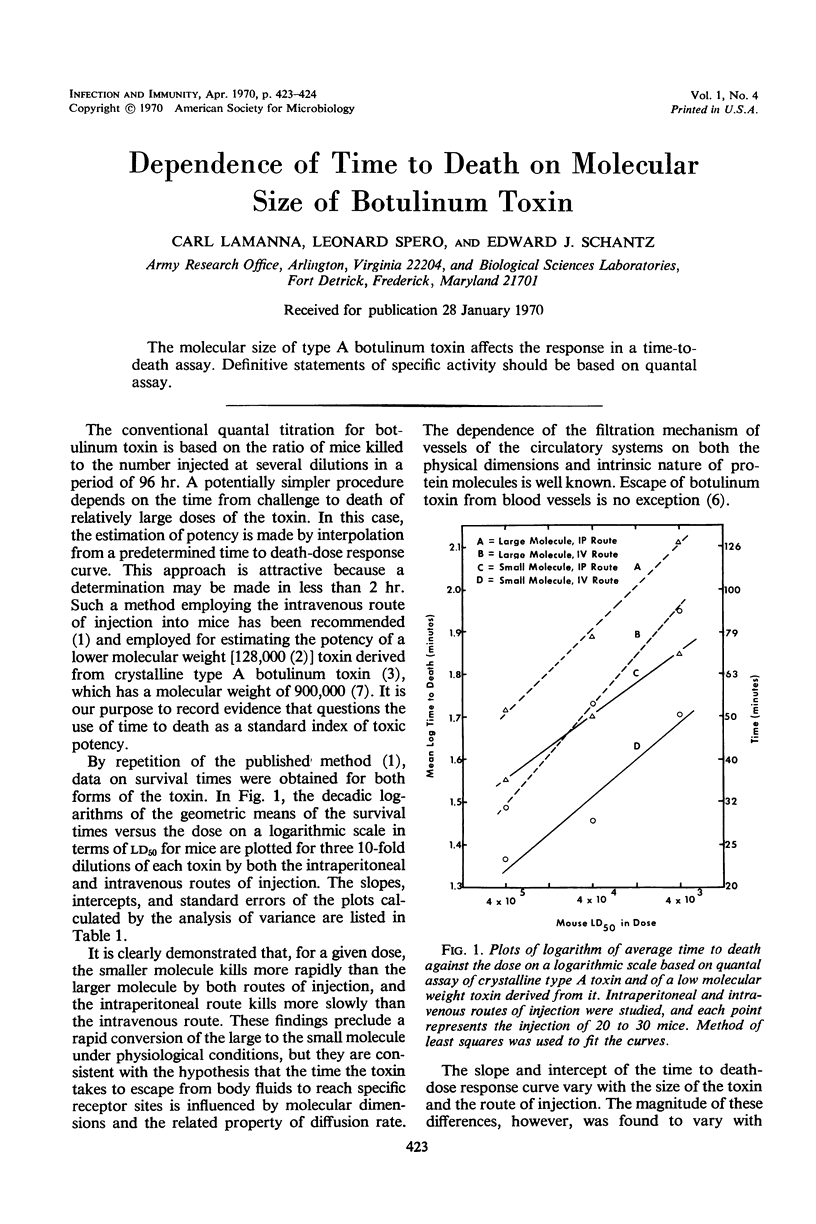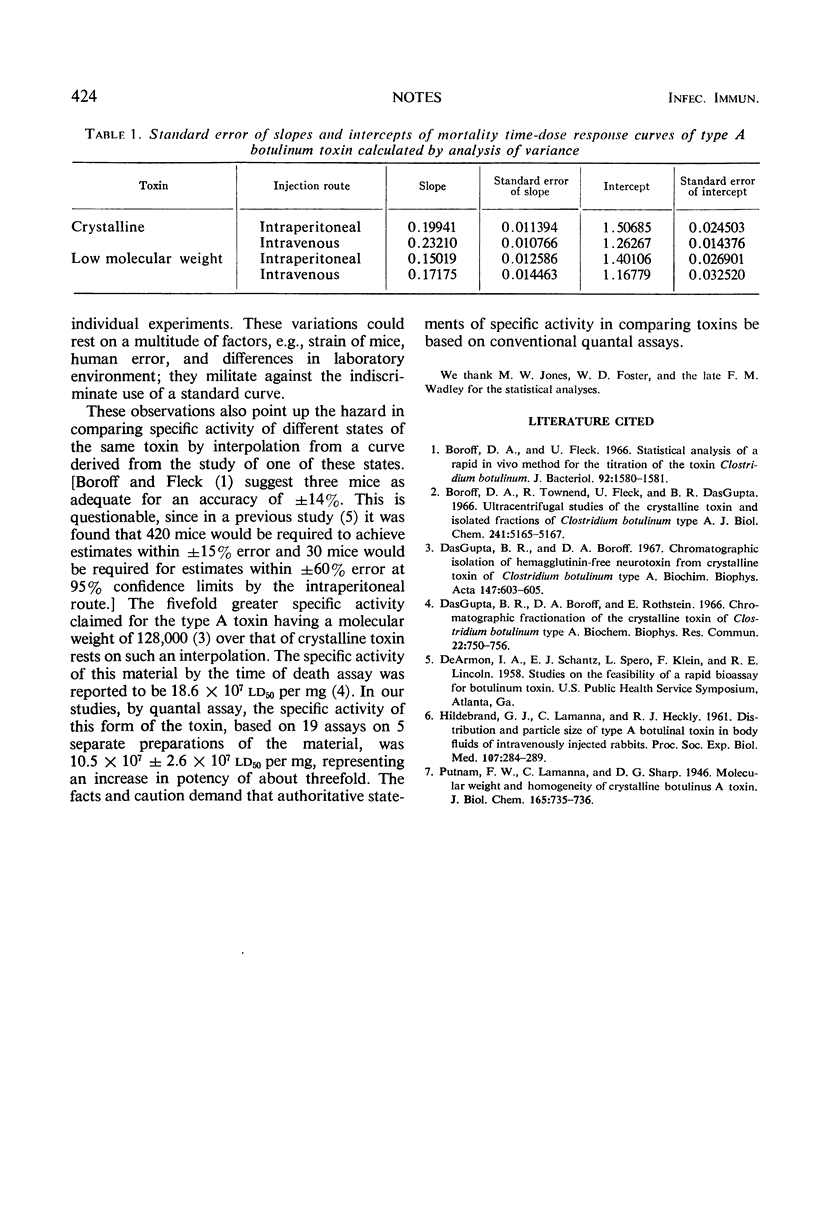Abstract
The molecular size of type A botulinum toxin affects the response in a time-to-death assay. Definitive statements of specific activity should be based on quantal assay.
Full text
PDF

Selected References
These references are in PubMed. This may not be the complete list of references from this article.
- Boroff D. A., Fleck U. Statistical analysis of a rapid in vivo method for the titration of the toxin of Clostridium botulinum. J Bacteriol. 1966 Nov;92(5):1580–1581. doi: 10.1128/jb.92.5.1580-1581.1966. [DOI] [PMC free article] [PubMed] [Google Scholar]
- Boroff D. A., Townend R., Fleck U., DasGupta B. R. Ultracentrifugal analysis of the crystalline toxin and isolated fractions of Clostridium botulinum type A. J Biol Chem. 1966 Nov 25;241(22):5165–5167. [PubMed] [Google Scholar]
- DasGupta B. R., Boroff D. A. Chromatographic isolation of hemagglutinin-free neurotoxin from crystalline toxin of Clostridium botulinum type A. Biochim Biophys Acta. 1967 Dec 12;147(3):603–605. doi: 10.1016/0005-2795(67)90024-4. [DOI] [PubMed] [Google Scholar]
- Dasgupta B. R., Boroff D. A., Rothstein E. Chromatographic fractionation of the crystalline toxin of Clostridium botulinum type A. Biochem Biophys Res Commun. 1966 Mar 22;22(6):750–756. doi: 10.1016/0006-291x(66)90212-9. [DOI] [PubMed] [Google Scholar]


